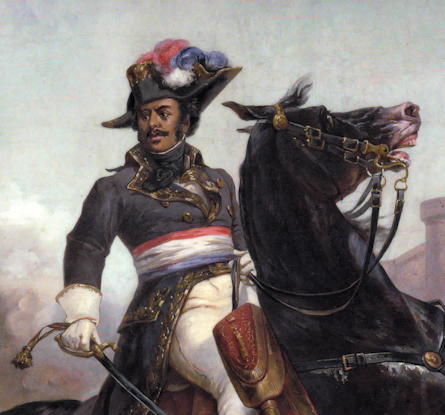Here you have the Musketeer text I wrote you about. As you will see, it is based on Clouard as well, and you might find it quite interesting.
The Musketeer series, which has been judged as historical, uses history only as background. Both the important and the lesser events they narrate are real, as well as the main characters. In other words, Artagnan, Athos, Porthos and Aramis existed, as well as Milady and Rochefort, and the best plotlines, as the adventure of the diamond laces, took place in the real life. But does Dumas respect them? No, of course. There’s a very weak compromise to history in here. The novelist feels free to break it, and even needs to do it. After all, the man named D’Artagnan isn’t important for the history of France. Dumas can turn him into a giant, if he changes him a bit, and the same happens with his friends.
According to Henri Clouard, Dumas’ biographer, the original text that inspired the book was called “Memories of Charles D’Batz-Castelmore, Count of Artagnan”. It was a book published, and probably written, by Gatien de Courtilz de Sandras, a musketeer who lived between the 17th and 18th centuries. The real D’Artagnan was born in Lupiac, Gascony in 1623. Dumas changes such date, so his character might participate of the intrigues of Louis XIII reign and the Religious Wars. The flesh-and-bone Artagnan was a musketeer, captain and military governor of Lille. In 1640, his name appears as a guard in the company of M. Des Essarts, and later documents mention he took part in the Siege to Arras. When he became a musketeer, Richelieu and Louis XIII were already dead, and his real protector was Mazarin; his name appears in his letters and in documents of the Ministry of War. He was an agent of Mazarin during the Fronde uprisings, lived at Louis XIV’s court, and he received the mission of arresting Fouquet. He also escorted Louis XIV when he looked for Maria Teresa de Austria, his then-to-be wife. In 1657 we was named lieutenant of the gray musketeers; ten years later, he became their Captain. He died during the Siege of Maestricht on June 23, 1673; he was killed by a gunshot to the neck when he wanted to lead his men over a bridge so they would take the city. Half his troops were also killed that day.
His alliance with Athos, Porthos and Aramis is fiction. Armand de Sillègue, lord of Athos, died in a duel before Artagnan became a musketeer. Actually, there were many Counts of La Fère, but none of them was called Athos. Porthos was named Isaac de Portau, and was musketeer in 1643. Clouard thinks he had an untimely death, maybe in a duel, war or because of illness, and might have known Aramis. Aramis was Henri de Aramitz, squire and secular abbot of Aramitz in the seneschalship of Olorón. He became a musketeer in 1640 when his uncle commanded them. He retired to his lands, married and fathered four children.
Dumas’ technique was simple and creative: preserve the main history but use it as a background, and change the unimportant history into the main plot.
The same happened with the plotline of the diamond laces. Remember the part the musketeers play on it? La Rochefoucauld, in his Memories, writes: The Duke of Buckingham cared a lot about his appearance. The Countess of Carlille noticed he carried some diamond laces she had never seen before, and concluded that they were a gift from the queen. During a ball, she cut two of the diamonds as they talked, and planned to send them to the Cardinal. That night, Buckingham discovered the loss and imagined the plans of the Countess of Carlille. He immediately ordered that every port in England should be closed. He ordered another pair of laces, identical to the ones he had, and sent them to the queen, telling her what had happened. Of course, the Countess of Carlille wasn’t named Anne de Brieul, nor Lady de Winter, but she was a spy for Cardinal Richelieu.
The Count of Rochefort was, to be strict, fictional. But Gatien de Courtilz, in the Memories of D’Artagnan, presents a similar character, named Rosnas (BTW, he also introduces Milady, Artagnan’s father, and three musketeer brothers, hmmm). Dumas took the character from the Memories de le Comte de Rochefort, that have been ascribed to Courtilz, and some even identify him as Henri Louis de Aloigny, marquis de Rochefort, but the last theory seems a bit too forced even to the most enthusiastic fans.
More The Three Musketeers
- The Three Musketeers
- Wherein D’Artagnan, Athos, Porthos, and Aramis meet. The full text of The Three Musketeers and The Four Musketeers.
- An Old French expletive and The Three Musketeers
- In both versions of Dumas’s Three Musketeers that I have access to, the translators chose to give up and not translate one word due to its total incomprehensibility.
- The Three Musketeers FLA
- The latest Musketeer movie has brought a huge number of questions about how it fits with the books and about the Musketeers in general.

Note that while this page is dated from 1998, that’s when I received it and when it was written. I didn’t get around to uploading it until 2025, which is possible the worst case of procrastination I have yet exhibited.